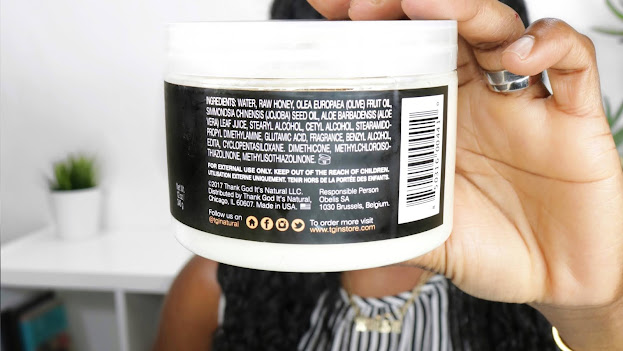How to Read Hair Product Ingredients Like A Pro!
Monday, September 14, 2020On my Instagram page, I've been talking about how important is it to create a habit of reading the ingredient labels on your hair products. As a fun challenge, I encouraged my followers to research the top 5-10 ingredients in their favourite hair products to master the benefits of each ingredient for their hair.
This is crucial in any hair journey! Knowing how a product performs, and how your hair may react to it, is necessary in order to keep and repeat what's successful and/or omit what doesn't work.
Early on in my hair journey, I became obsessed with learning the benefits in the ingredients of my favourite hair products. This curiosity led me to understand my hair better and successfully pick products that agree with my hair.

Recently, I've noticed an incline in messages from ladies who are using products incorrectly i.e. using a protein based conditioner when they thought it was moisture based or using a clarifying shampoo weekly when they should have been using a sulfate free shampoo. Unfortunately, this confusion and misuse of product usage led to unwanted dryness, breakage and shedding all because they were unaware of what their products contained.
I get it, reading a product label can be intimidating and confusing. Trying to pronounce these long everlasting words can be overwhelming...whew!
But at the same time, it's crucial to learn the job of each ingredient. Some strengthen the hair, while others provide moisture and slip. Today, I'm breaking this down for you.
Below, I'm going to share ingredients most associated within each hair care category so that you can easily spot them when browsing ingredients in your products at home or when you go shopping. I will be breaking ingredients down by category: Cleansers/Clarifying, Detangling, Protein/Strength, Moisture/Hydration, Shine/Penetrating Oils.
Let's get started!
For cleansers, we have clarifying shampoos and sulfate free shampoos. We keep these in rotation within our hair regimens. However, it's important to know and understand the difference between the two.
Clarifying shampoos strip the hair of product build up, dirt, oils etc. It is formulated to deep clean the hair an scalp. It's highly recommended to use a sulfate-free shampoo after using a clarifying shampoo to restore the softness and moisture back into the hair. Clarifying shampoos should be used once a month to reset the hair and enhance the absorption of products. These shampoos have the following ingredients:
- Ammonium Lauryl Sulfate
- Ammonium Laureth Sulfate
- Sodium Lauryl Sulfate
- Sodium Stearate
- Alpha-olefin Sulfonate
- Disodium Cocoamphodipropionate
- Sodium C14-16 Olefin Sulfonate
- Cocamindopropyl Betain
- Trideceth-7 Carboxylic Acid
- Cocamide DEA, MEA, MIPA
- Fatty Alcohols (Cetyl alcohol, Stearyl alcohol, Cetearyl alcohol, Benzyl, Myristyl alcohol)
- Slippery Elm
- Marshmallow Root
- Behentrimonium Methosulfate
- Stearamidopropyl Dimethylamine
- Polyquaternium-11, 32
- Hydrolyzed Oat, Soy, Silk, Wheat protein
- Hydrolyzed Vegetable Protein
- Hydrolyzed Keratin
- Hydrolyzed Collagen
- Silk Amino Acids
- Behentrimonium Chloride
- Panthenol
- Glycerin
- Aloe Vera Leaf Juice
- Stearalkonium Chloride
- Propylene Glycol
- Centrimonium Chloride
- Polyquaternium-7, 37
- Olive Oil - Improves elasticity
- Coconut Oil - Prevents the loss of protein in the hair
- Avocado Oil - Natural humectant, moisturizes brittle hair




















![About [span]me[/span]](https://blogger.googleusercontent.com/img/b/R29vZ2xl/AVvXsEjYJ-OsqTpjwUx6WGVITW4ZgfpwWcy6ohcmxzywksod6SoNT833CkUghcABUDw6R5szEcgPNIy1G8Hz3TZDw_yvDpGTORLApguLMsj7oKRJufcX5-bwtMQWEBhtLb-vkx_kfMSMIuMsMp4/s1600/Untitled+design-6.png)



0 comments